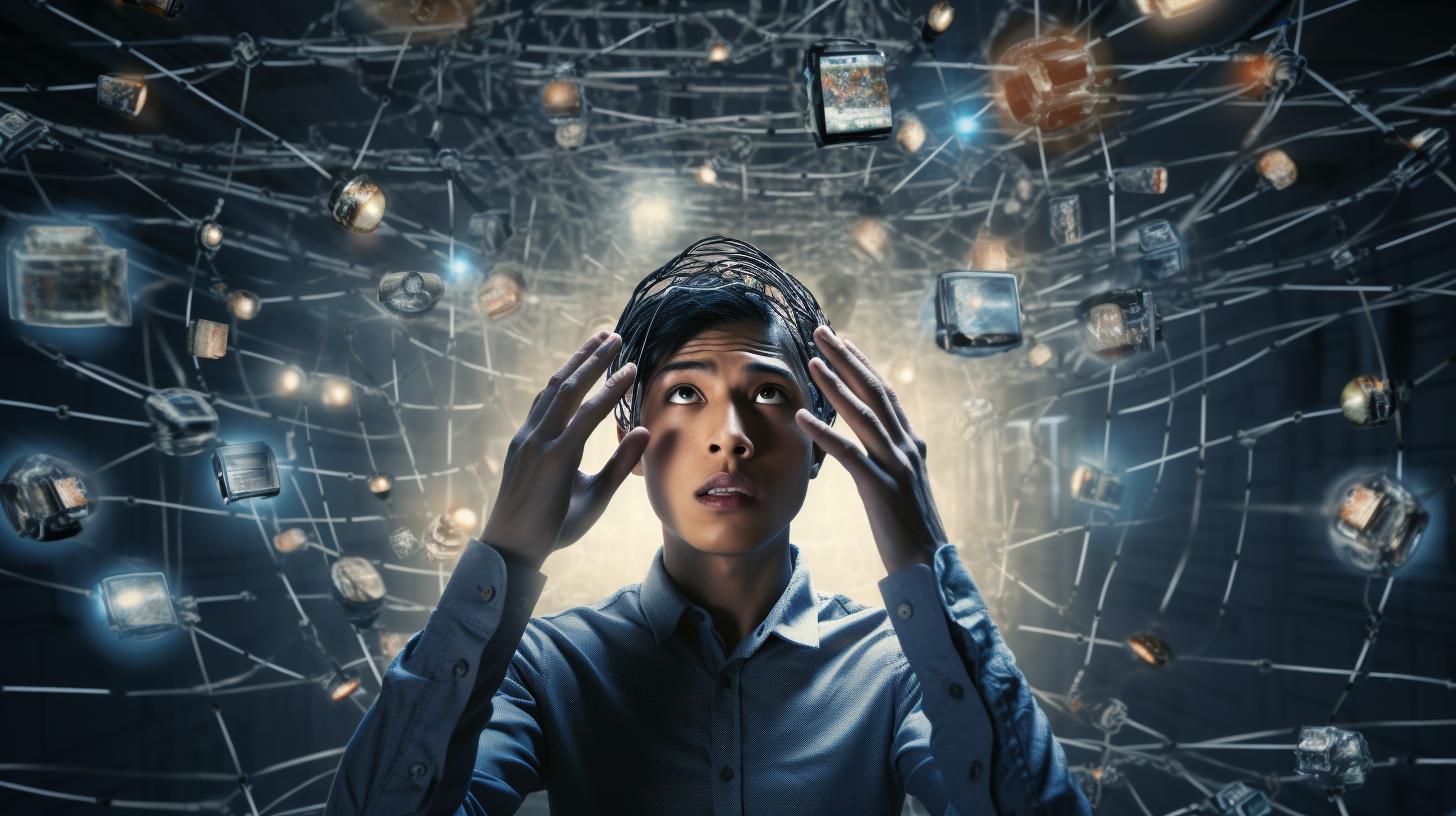Are you curious about AI-generated content and what it entails? AI-generated content is a type of content that is created by machine learning using human inputs rather than traditional writing processes. In this article, we will explore the definition of AI-generated content, its advantages and limitations, its impact on the content creation industry, ethical considerations, tools for detecting AI-generated content, Google’s guidelines and policies, successful use cases, and future prospects.
AI-generated content is an innovative way of creating written or designed content by using artificial intelligence. It offers many benefits, such as speed, efficiency, scalability, and consistency. However, it also has limitations such as lacking a human touch and creativity, potential for errors and misinformation, and ethical considerations. In this guide, we will delve into the advantages and limitations of AI-generated content and provide examples of its impact on the content creation industry.
AI-Generated Content: Pros and Cons
- AI-generated content is created with the help of artificial intelligence.
- Advantages of AI-generated content include its speed, efficiency, cost-effectiveness, and consistency.
- Limitations and drawbacks include the lack of human touch and creativity, potential for errors and misinformation, and ethical considerations.

Advantages of AI-generated content
One of the primary advantages of AI-generated content is its speed and efficiency. AI-generated content can be produced much faster than human-written content, saving time and money. It can also improve productivity and allow for more content to be produced in a shorter amount of time.
Another advantage of AI-generated content is its cost-effectiveness. Hiring human writers can be expensive, especially for large volumes of content. AI-generated content can be produced at a lower cost, making it an attractive option for businesses with limited budgets.
AI-generated content is also scalable. It can be produced at a much larger scale than human-written content, enabling businesses to produce more content without having to hire additional writers. Additionally, AI-generated content offers consistency in terms of tone, style, and format.

Limitations and drawbacks of AI-generated content
Despite its advantages, AI-generated content also has some limitations. One of the primary limitations is the lack of human touch and creativity. AI-generated content is produced using a set of rules and algorithms, which means that it may lack the emotional appeal and creativity that human-written content can provide.
Another limitation of AI-generated content is the potential for errors and misinformation. AI-generated content is only as good as the data it is trained on, and it may not always be able to identify inaccuracies or inconsistencies in the data.
Finally, ethical considerations are essential when it comes to AI-generated content. AI-generated content can be used to manipulate public opinion, spread misinformation, and create fake news.
How AI-generated content is impacting the content creation industry
AI-generated content is changing the way content is created. It is enabling businesses to produce more content at a faster rate and at a lower cost. This has significant implications for the content creation industry.
One potential impact of AI-generated content is the potential for automation. As AI-generated content becomes more advanced, it may be possible to automate the entire content creation process. This could have significant implications for the job market, leading to job losses in the content creation industry.
AI-generated content is also having an impact on content marketing and SEO. It can be used to improve SEO by creating content that is optimised for search engines. It can also be used to create content that is tailored to specific audiences, which can improve engagement and conversion rates.
Ethical considerations of AI-generated content
There are ethical considerations when it comes to AI-generated content. One of the main considerations is transparency and disclosure. It is important to disclose when content has been generated using AI so that readers are aware of the source of the content.
Another consideration is the potential for bias. AI-generated content is only as good as the data it is trained on, and if the data is biased, then the content will be biased as well. It is important to ensure that the data used to train AI models is diverse and representative.
Finally, copyright issues can also arise with AI-generated content. It is important to ensure that the content is original and not plagiarised.
Tools for detecting AI-generated content and preventing plagiarism
Detecting AI-generated content can be challenging, but there are online tools and signs to watch for. Copyleaks offers an AI Content Detector that is designed to detect human-generated text and prevent false accusations. The tool incorporates user feedback, extensive testing, and a low risk of misidentifying human-written content as AI-generated.
Originality and authenticity are key in content creation. It is important to ensure that the content is not plagiarised and that it is original. There are several online tools available to help with plagiarism detection, such as Grammarly and Turnitin.
Google’s guidelines and policies for AI-generated content
Google Search encourages the use of AI-generated content that is high-quality, original, and trustworthy. While manipulating search rankings with AI is against Google’s policies, using AI to create helpful content is allowed. Google has measures in place to address poor quality content, whether human or AI-generated. The search engine prioritises reliable sources and does not promote content that contradicts established consensus. It is recommended to provide accurate author information and disclose the use of AI or automation when appropriate.

Examples of successful use cases of AI-generated content
AI-generated content has several successful use cases. AI-generated content can be used for product descriptions and technical documentation. It can also be used for social media posts and email marketing. News articles and reports can also be generated using AI.
One successful example of AI-generated content is The Washington Post’s Heliograf, which is an AI-powered newsroom that can write articles and alerts in real-time. Another example is the Associated Press, which uses automated journalism to produce earnings reports and minor league sports coverage.
| Negative Impacts of AI-generated Content | Prevention Strategies |
|---|---|
| Spread of Misinformation | Use diverse and reliable data, and fact-check content before publishing |
| Loss of Jobs in the Content Creation Industry | Balance AI-generated content with human input, and provide training for human workers to operate alongside AI |
| Bias in AI-generated Content | Use diverse and representative data, and regularly evaluate and adjust AI models to prevent bias |
Case Study: AI-Generated Social Media Posts
As a social media manager for a small business, I was struggling to keep up with the demand for fresh, engaging content to post on our social media accounts. I had heard about AI-generated content and decided to give it a try.
After researching and testing a few different AI-generated content tools, I settled on one that provided a variety of options for social media posts. I inputted some general information about our brand and target audience, and the AI started generating posts.
At first, I was hesitant to use the AI-generated posts without any human editing or review. However, as I started to post them and track their performance, I was pleasantly surprised. The engagement rates were just as high, if not higher, than the posts that I had spent hours crafting myself.
The AI-generated posts were also consistent in tone and style, which helped to establish our brand voice. And since they were generated quickly and efficiently, I was able to focus on other aspects of my job.
Of course, there were a few posts that were off-brand or didn’t quite make sense, but those were easily identified and discarded during the review process.
Overall, incorporating AI-generated social media posts into our content strategy has been a game-changer for our small business. It allows us to maintain a consistent social media presence without sacrificing quality or creativity.
Negative impacts of AI-generated content and how to prevent them
While AI-generated content offers many benefits, it also has the potential to cause negative impacts. Some of these impacts include the spread of misinformation and the loss of jobs in the content creation industry. It is essential to consider the ethical implications of AI-generated content and to use it responsibly.
To prevent negative impacts, it is crucial to balance AI-generated content with human input. This can help ensure that the content is of high quality and meets the needs of the target audience. Additionally, using transparent and diverse data can help prevent bias in AI-generated content.

Future prospects and potential developments in AI-generated content technology
The future of AI-generated content is promising. Advancements in natural language processing and machine learning are making it possible to produce more advanced and sophisticated content. There is also potential for new applications of AI-generated content, such as chatbots and virtual assistants.
However, it is essential to consider the ethical implications of AI-generated content and use it responsibly. Balancing AI-generated content with human input can help ensure high-quality content creation. At Article Fiesta, we provide advanced content generation tools that outshine competitors. Our AI-generated content is high-quality and readable, with direct blog posting, scheduled automatic posting, and brand voice customisation. We offer built-in SEO features that handle internal links, meta descriptions, and headings for maximum impact. We also provide royalty-free images, videos, and graphics to enhance articles. Our exceptional content generation sets us apart, and we continuously improve our features to provide the best service possible.
Conclusion
AI-generated content offers many benefits, such as speed, efficiency, and scalability. However, it also has limitations and drawbacks, such as the lack of human touch and creativity, potential for errors and misinformation, and ethical considerations. It is important to balance AI-generated content with human input and to use it responsibly. By doing so, we can ensure that AI-generated content continues to be a valuable asset in the content creation industry.
